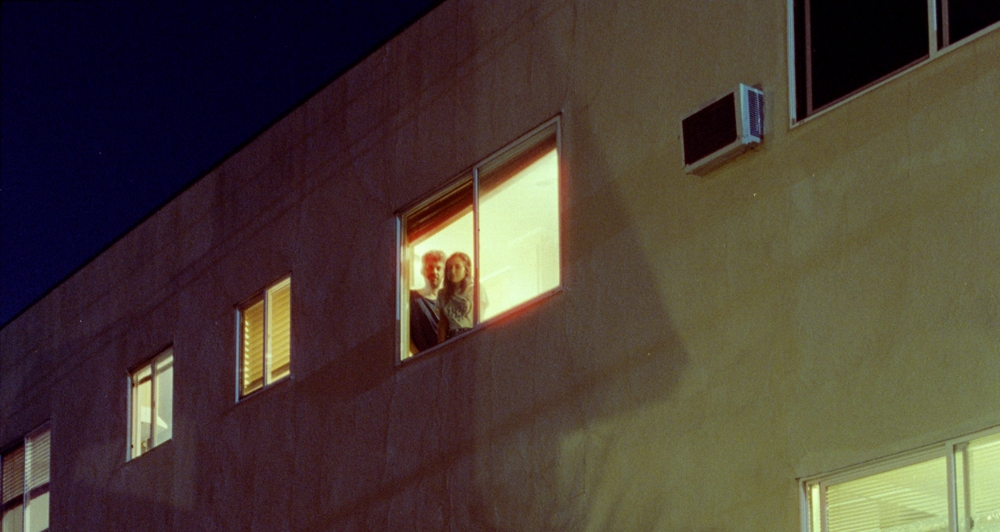Los Angeles–based photographer Brandy Eve Allen has responded uniquely to the isolation of the COVID social distancing period with a new series of portraits, shot from the street, of isolators in their homes. The subjects of the photos, who Allen found on Nextdoor around the Silver Lake, Echo Park and Los Feliz areas of Los Angeles, elicit an emotional response, encompassing both a longing sensation of the subjects and an implied sense of voyeurism.

Brandy Eve Allen, Brian, Frogtown, 2020
Allen’s film photographs are a stark representation of our specific cultural moment, when time seems to slow and we huddle in our homes, passing the time like the subjects of Renaissance paintings, eating and lounging nude. The photos generally follow a uniform format: a subject (occasionally two) can be seen inside a window or doorway peering out into the street from their homes interiorly lit, while a flash (typically but not always) illuminates the exterior. Simple in approach, though the results are striking. The architecture of the dwellings also leads the photos to appear frozen in time.

Brandy Eve Allen, Leann & Bill, 2020
Though Allen’s photographs are technically social-distancing portraits of people at home, their sweeping impression is more like architectural landscape photography that has a subject in it, as an element in the composition rather than being the distinctive focus. In many cases, the subjects are shrouded in their confines, and can be seen as mere silhouettes. This creates a sense that the dwellers lend themselves at times to being universal, as they could be anyone, yet idiosyncratically are also visual representations of the isolation, and by extension loneliness, that one feels while in quarantine. Allen, however, doesn’t see the isolation as necessarily a negative attribute. “We’re constantly inundated, and we need to get into this silence… we need to get comfortable in silence.” When asked if she had a positive relationship with solitude, Allen said “totally,” and that sense of comfort is clear in her work. By directing these photographs she visually welcomes viewers into seeing social distancing—and by proxy isolation—through her perspective. The photographs breathe that silence and stillness, and rather than offering a snapshot, they capture instead a heavy distinct moment.

Brandy Eve Allen, Phil, Echo Park, 2020
“I think I’m showing how other people are in isolation,” Allen said. “Most of my other work has to do with me in isolation, that internal existential conversation that you have when you’re feeling isolated, as more of a constant.” The photos are more a representation of the subjects as stand-ins for others’ responses to the pandemic, not necessarily the artist’s personal experience.

Brandy Eve Allen, Ali, Los Feliz, 2020
Allen is quick to point out that isolation and alienation are a fact for many before the pandemic began: “Here’s the thing. There are people in the world that are really fucking cool and have so much to offer, but for some reason, the world just isn’t responding to them. And so they exist in a form of isolation.” She herself identifies in at least some form as isolated from societal structures, including the art world. “It becomes a lot to encounter so much rejection, to put yourself out there, and to not find your path. But I look at isolation and see it in beautiful ways.”

Brandy Eve Allen, Matt, Echo Park, 2020
Viewing the photo series as a whole, one gets the sense that while these subjects are apart and alone in their respective homes, they are having a shared human experience, which is, in a sense, what the photographs and this moment in time seem to be about. “I wouldn’t say I’m a guru of meditation, but I do think I need it, and if I would commit to meditation three times a day it would have a profound effect on me,” Allen said. “I think people need to take care of themselves right now, on a deep, spiritual level.”


